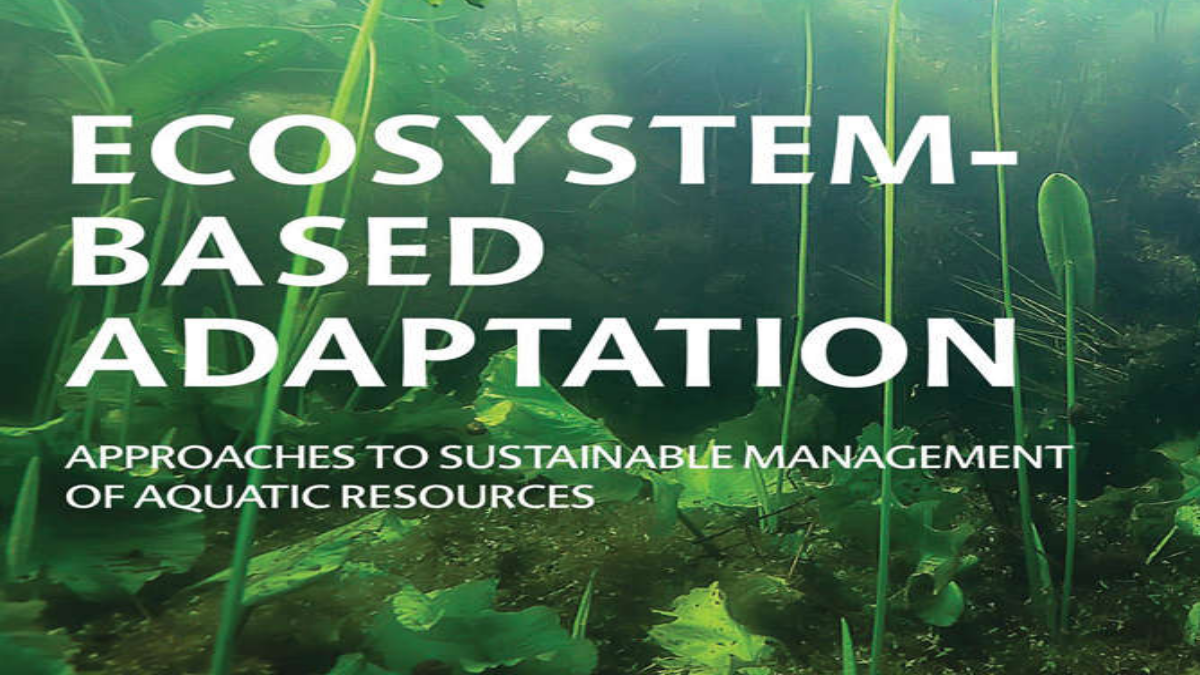
Climate change and the pandemic have been with humankind as perennial problems for ages, wreaking havoc on human lives and prosperity. Mass vaccination has provided a semblance of respite to humankind from the scourge of the pandemic, but climate change continues to threaten the very existence of biotic life on Earth. Among the various solutions advanced by scientists to combat climate change, Ecosystem-Based Adaptation is garnering sufficient international traction, and its successful implementation in many countries, as portrayed in the book, is a testimony to its rationale and contemporary relevance. It presents a close examination of the role of ecosystem-based adaptation in managing river basins, aquifers, flood plains, and their vegetation to provide water storage and flood regulation. The book explores improved ecosystem-based services for managing floods, conservation of water and its resources, avoiding water scarcity, and ensuring long-term water security planning, in the context of sustainable development goals.

The academic and research worth of this book lies in its prime focus on applying ecosystem-based adaptation to major goals enshrined in the 2030 Agenda, which is touted as a plan of action for the prosperity of the people of planet Earth. The author has meticulously intertwined linkages between ecosystem-based adaptation and major sustainable development goals by specifically focusing on viz., tackling the problem of hunger (SDG-2) by ensuring food security; clean drinking water (SDG-6) by ensuring water security; sustainable cities (SDG-11) by moving towards sustainable smart cities; climate action (SDG-13) by understanding the magnitude of the challenge of climate change and suggesting means to cope with this problem; safeguarding life below water (SDG-14) by suggesting means and measures to sustain life below water; and protecting life on Earth (SDG-15) by adhering to means and measures that help conserve life. The salient feature of this book lies in its emphasis on nature-based solutions, with specific emphasis on ecosystem-based adaptation (EbA), and it recommends mainstreaming EbA into national, provincial, and local level adaptation plans as a means to realise the goals of Agenda 2030. This book is helpful to scientists, policy-makers, climatologists, development experts, and all those interested in saving this planet from the vagaries of climate change because it paves the way for easy implementation of sustainable development goals for ensuring a secure and sustainable future.
The book has ten chapters, and each chapter deals with the diverse ecosystems. The first chapter focuses on the concept of disaster and its interlink ages with notions of risk and hazard, along with an emphasis on vulnerability and resilience as well. The second chapter provides a brief description of the main components of climate change—atmosphere, biosphere, cryosphere, hydrosphere, and lithosphere. Chapter three focuses on the Ecosystem-based Adaptation (EbA) approach as a concept, along with a brief examination of the major ingredients of the approach. Chapter four takes into account the pros and cons of mitigation and adaptation measures to deal with climate change. Chapter four takes into account the pros and cons of mitigation and adaptation measures to deal with climate change. Chapter five deals with the theme of water security with a specific focus on the issues of water quality and water scarcity, and thereafter proceeds to analyse the impact of climate change on water. Chapter six takes into account the concept of food security, which is elaborated with a brief appraisal of the notion of hunger and the impacts of climate change on ensuring food security. Chapter seven deals with smart cities, along with a focus on linkages between urbanisation and sustainable development. Chapter eight focuses on life below water, with specific emphasis on environmental stressors like ocean warming, acidification, deoxygenation, and sea-level rise, along with anthropogenic stressors like plastic pollution, oil spills, overfishing, greenhouse gases, land-based sources of marine pollution, etc. Chapter nine focuses on the theme of life on Earth, with a specific focus on freshwater ecosystems, forests, genetic resources, wildlife, and land-use, etc. Chapter ten emphasises mainstreaming EbA in programmes and policies in the action plan at national and provincial levels. The concept of mainstreaming is examined along with categories of mainstreaming climate change adaptation.
The writer is a former journalist and works in the Haryana Electricity Regulatory Commission as Dy Director, Media.